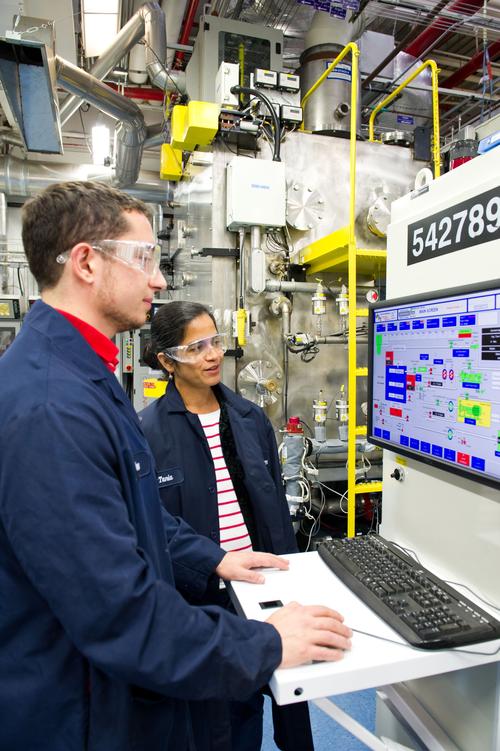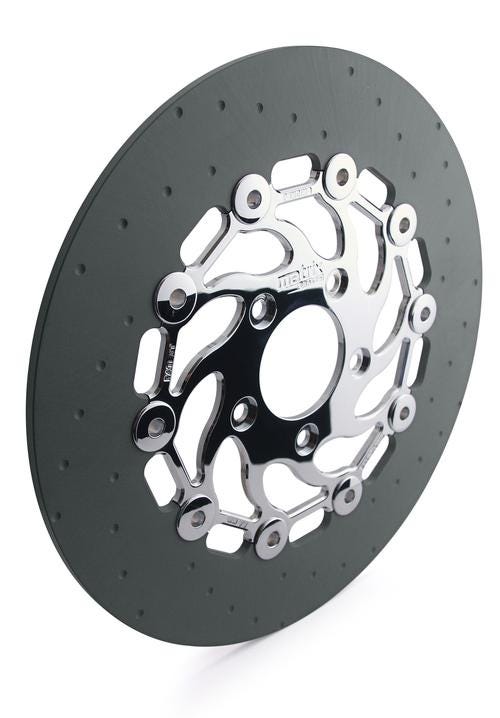Metal & Ceramic Matrix Composites Beat the Heat
October 24, 2014

Metal matrix composites and ceramic matrix composites play an ongoing role in aerospace and defense, such as military vehicle armor, spacecraft and space vehicles. Other sectors and products increasingly taking advantage of their thermal management, light weight, and strength include commercial jet engines and industrial turbines, automotive disc brakes, electronics, and medical.
Due to their complexity, difficulty of manufacture, and cost, both materials groups have been confined mostly to higher-end uses. Metal matrix composites (MMCs) generally consist of a metal matrix reinforced by a second material: either another metal or an entirely different material, such as a ceramic. MMCs are developed for very specific end uses with specific combinations of characteristics, such as high stiffness and strength plus resistance to high temperatures for spacecraft. Ceramic matrix composites (CMCs) are also usually developed for very specific uses, often also in aerospace and military applications. Increasingly, CMCs are being used in jet engine components, such as those from Pratt & Whitney and CFM International. Even Boeing and Airbus are doing their own internal R&D on the use of CMCs in jet engine parts.

As another example of their specialized use, MMCs have so far appeared in friction brakes for motorcycles, racecars, and high-performance sports cars, but not passenger vehicles. These composites are usually a combination of metals - often magnesium or aluminum - and various ceramics that replace metals in parts such as a brake rotor. In brake rotors, the metal traditionally replaced is cast iron, and the advantages gained are lighter weight, along with more durability due to the composites' ability to better withstand large changes in temperature and pressure.
REL Inc., which makes transportation and aerospace components out of MMCs, has developed a technology called functionally reinforced gradient. This creates a material whose properties can be customized in each section of the rotor, by placing higher or lower volume loading of the ceramic particles and fibers in different areas of the high-temperature aluminum alloy.
The company jointly developed a prototype aluminum composite brake rotor with Polytechnic Institute of New York University researchers, which weighs 60% less than existing cast-iron versions, aimed at automotive applications. Rotor life is boosted significantly by placing reinforcement where additional strength is needed, increasing high-temperature performance, and minimizing stress at the interfaces between the rotor's three different functional sections. In the past, those typically required materials with specific combinations of strain and thermal properties. The team had specifically set out to create a material that is easier to manufacture, and designed the fiber reinforcements to provide a longer life span. Making automotive brake components more durable has been a longstanding research goal, since they must operate in an environment with tremendous temperature and pressure changes.

Brake discs based on REL's functionally reinforced gradient technology are currently in production for motorcycles, as well as recreational vehicles and small electric vehicles. The company continues to develop materials for lightweight MMC brake discs and drums in a variety of applications.
Aside from friction brakes, MMCs also are used for producing durable and lightweight parts in ground transportation, marine uses, industrial equipment, and the nuclear power industry, and are growing in electronics and thermal management applications, according to recent market studies by Transparency Market Research and Research and Markets. Some researchers are even developing MMCs reinforced by nano-particles.
By definition, CMCs use a ceramic matrix strengthened by fibers or particles, usually some form of ceramic. Reinforcements can vary: they include silicon carbide, alumina, or even carbon, and can consist of continuous or short fibers or particles. Fabrication processes include chemical vapor or liquid phase infiltration, hot press sintering, polymer infiltration, and pyrolysis.
These composites are especially valued for their wear resistance, heat resistance, and high strength. In addition to aerospace and military uses, they're also valuable in thermal management. The main advantage is the fact that they can be manufactured to be as strong as metal, but much lighter in weight and able to withstand much higher temperatures.
About the Author(s)
You May Also Like


.jpg?width=300&auto=webp&quality=80&disable=upscale)


